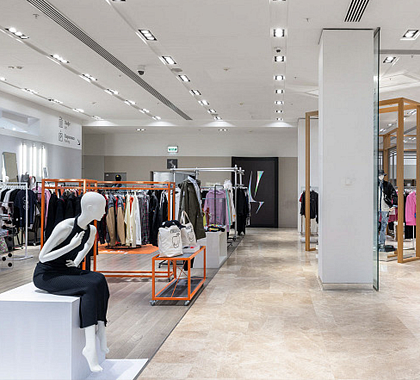Experts from Yakov and Partners and Nielsen assessed the digital maturity of the 100 largest Russian companies in retail and consumer packaged goods (CPG), identifying key development areas and the medium-term potential of digitalization. According to the study “Digitalization of Retail and CPG: How Leaders Convert Digital Transformation into Profit,” about 70% of companies have already moved from experimentation to scaling digital solutions across all areas of the business.
Competitive pressure from e-commerce companies, talent shortages, and the high cost of borrowing are pushing retail and CPG players to accelerate technological development. Those actively investing in digitalization see a 1.5–2× greater impact on operating-profit growth than more conservative market participants. This shows that digitalization has ceased to be a fashionable trend and has become a prerequisite for sustainable growth
Alexey Kletsko, a Director at Yakov and Partners
As part of the study, the experts identified three types of companies by their approach to digital transformation. “Innovators” are the first to adopt new technologies and are open to experimentation and risk. Companies in this group achieve higher results thanks to three key factors: end-to-end technology adoption across every stage of the business, willingness to invest financial and human resources, and the cultivation of an innovation culture that embraces change. According to the experts, about 70% of innovators achieved a 3–5% increase in operating profit, and another 60% saw a 1–3% increase. Even among innovators, however, there is a gap: retailers show roughly twice the operating-profit growth of companies in the CPG sector.
This is because retail remains one of the most innovative industries: market players are quick to adapt to change and seek additional growth points, actively developing digital marketplaces, retail media, data monetization, and other areas that open up new revenue streams
Konstantin Loktev, Executive Director at Nielsen
“Realists” focus on proven solutions that have demonstrated effectiveness in the Russian market. They avoid excessive risk, approach experiments cautiously, and rely on the experience of others. According to the survey, 28% of realists achieved a 1–3% increase in profit, and 30% achieved a 3–5% increase, indicating stable but limited digitalization results.
“Conservatives” lag significantly behind the first two groups: only 12% of companies in this segment achieved a 1–3% increase in operating profit. This approach — relying exclusively on mature technologies — significantly constrains business growth potential.Innovation activity is directly linked to financial results. The more willing a company is to experiment and implement new technologies, the higher its profits. The gap between innovators and conservatives is more than twofold — 2.2% versus 0.9%
Vsevolod Kuznetsov, an Engagemen Manager at Yakov and Partners.
One of the most promising areas the experts highlight is “technologies of the future” — primarily generative artificial intelligence (genAI) and robotics. They estimate that deploying genAI can increase operating profit by 12–19% in retail and by 9–15% in CPG.
Robotics, in turn, helps offset labor shortages and increases operational efficiency in logistics, stores, and warehouses. As a result, companies can gain an additional boost to their operating profit of more than 10%. At the same time, retailers and CPG companies are actively developing their own digital business models — marketplaces, retail media platforms, and data monetization systems — opening new revenue channels and creating independent ecosystems.By our estimates, the financial impact from implementing these technologies could reach 100–160 billion rubles for retail and e-commerce by 2030, and 60–100 billion rubles for the consumer-goods segment. People are increasingly tired of choice overload and gravitate toward simplicity and efficiency. In this context, generative AI becomes the key to optimizing the customer journey — from recommendations and support to automated marketing and supply-chain management
Marina Dorokhova, a Director at Yakov and Partners
According to the experts, the next 3–5 years in retail and CPG will see deeper integration of robotics and genAI, significantly enhancing the capabilities and efficiency of robotic systems. Realizing the full potential of digitalization will require adopting the “innovator” model, integrating next-generation technologies, and aligning CEO and CTO strategies — because the interplay between business and technology is becoming the primary source of competitive advantage.



